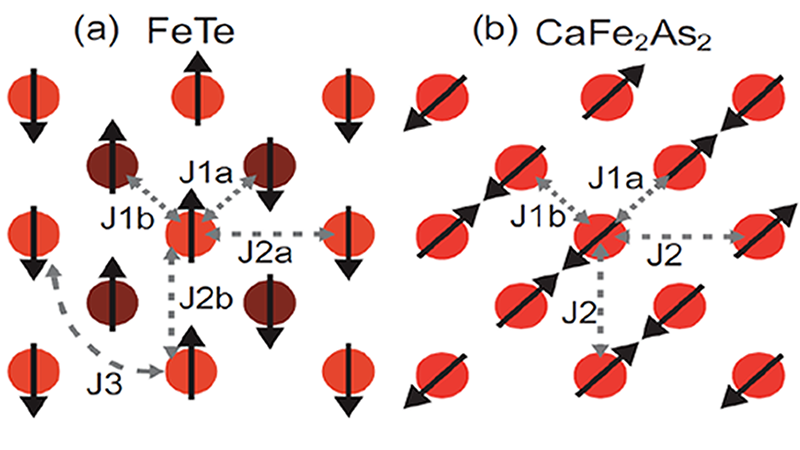January 2, 2011

Measurements conducted at the Spallation Neutron Source at ORNL have determined exchange couplings in the mag- netically ordered chalcogenide Fe1.05Te, a nonsuperconducting member of the iron-based family of superconductors. The results show the exchange pairings thought to be related to superconductivity occur in a next-nearest-neighbor ordering of atoms, rather than in nearest-neighbor order as in a previously studied iron arsenide.
Researchers from the University of Tennessee, ORNL, and other institutions collaborated to study the spin waves in Fe1.05Te. Superconductivity in iron-based superconductors emerges in proximity to magnetic order; similarly, many researchers think superconductivity in the copper oxides is driven by magnetic fluctuations. The magnetic order in Fe1.05Te is considerably different from the related iron pnictide superconducting system, raising the question of whether magnetism can in both cases still drive the superconductivity in iron-based superconductors.
To answer that question, the exchange coupling energies in the Fe1.05Te system were charac- terized using the ARCS instrument at SNS and other instruments to measure the spin waves and fitting the waves to a Heisenburg Hamiltonian. The dispersion of the spin waves in this sys- tem is novel and very different from that in the previously measured iron pnictide CaFe2As2. Fitted exchange couplings of J1a =-17.5 ± 5.7, J1b = -51.0 ± 3.4, J2 = J2a ≈ J2b = 21.7 ± 3.5, J3 = 6.8 ± 2.8 meV were found.
Read more at ornl.gov.
Related Publication: Lipscombe, O. J. et.al. (2011). Spin Waves in the (π, 0) Magnetically Ordered Iron Chalcogenide Fe1.05Te. Physical Review Letters, 106, 057004. doi.org/10.1103/PhysRevLett.106.057004